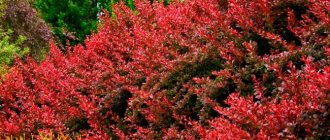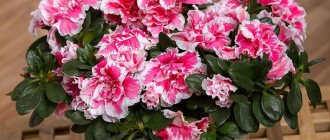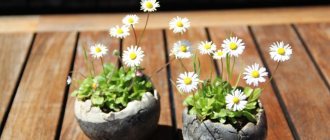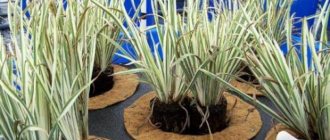Maiden grapes in landscape design, photos of which are presented in a variety of design solutions, have long been used to decorate unsightly places on the site, create hedges and arches. This ornamental climbing plant has very large lacy leaves, green in summer and red or yellow in autumn. In Europe, where winters are mild, its lashes cover the walls of houses, giving a beautiful appearance to stone buildings and freeing cottage owners from the responsibility of maintaining the facade. Vertical gardening in landscape design with the help of vines allows you to implement various ideas, creating green gazebos and shady corners within the site for relaxation during the hot season.
Maiden grapes are used to create hedges and arches
Advantages of girlish grapes
Decorative grapes became popular thanks to:
- undemanding to soil, watering, sunlight;
- lack of complex care;
- long lifespan;
- rapid growth;
- frost resistance;
- ability to delight with abundant foliage throughout the season.
The plant produces leaves in early May; in September, the lush green head changes color, becoming bright red and adding a touch of elegance to the boring autumn decoration.
Pros and cons of grapes as a design element
- The plant produces an abundant amount of green mass and has beautiful carved leaves.
- Thin and flexible vines can be bent in any direction, obtaining the desired trunk configuration;
- Fast and active growth allows you to get the expected result in 1-2 seasons.
- Maintaining the resulting image of the site is not easy; you will have to constantly adjust and trim the plants.
- When creating a landscaping project, first of all you will have to take into account the specifics of plants, and only then - design solutions.
- You will have to choose between the decorative appearance of the site and the practical benefits of the grapes.
Most gardeners try to harmoniously combine all the capabilities of plants, obtaining maximum benefit from them both in agricultural and artistic terms.
Use in landscape design
Wild grapes will not greatly please the owners with their fruits. However, this is not required of him. The lovely plant is used exclusively to decorate the site. They can decorate gazebos, sheds and residential buildings, fences and hedges, create living screens and openwork roofs.
The plant does not take up much space, so it can be used even in a small area.
Thanks to their luxurious foliage, grapes serve as an excellent way to maintain a pleasant temperature inside a building, protecting the interior from the hot rays of the sun.
The only drawback of such a decoration will be the abundance of leaves, which can knock down fragile structures. Sometimes the plant is used to create a dense horizontal carpet. This type of decor looks especially good in poor lands.
Introduction
Grape cultivation is not always carried out for agricultural or industrial purposes.
The liana with beautiful carved leaves looks very attractive. It is not for nothing that one of the traditional elements in wood carving is grape leaves. Many owners of private houses decorate their plots with decorative varieties of grapes, the berries of which are not eaten.
As a rule, wild varieties are used, but sometimes the site is decorated with cultivated species. There are many options for designing the territory, which should be discussed in more detail.
Description of the variety
Maiden grapes, planting and caring for which are not difficult, are a woody, fast-growing vine. North America is considered the birthplace of the plant, but today it has spread literally throughout the world.
About 10 species are the most popular; in total there are several dozen of them in nature. The beautiful climbing shrub is especially loved in America and Asia, but recently it is increasingly found in summer cottages in central Russia.
The height of the grapes can reach 15 meters, and the plant is helped to climb upward by thin tendrils that easily cling to the smallest irregularities.
The original large leaves of the usual shape for grapes have a bright emerald color, which in the fall gives way to red, crimson, burgundy tones.
Maiden grape flowers do not have beautiful shapes or an attractive aroma. Most often, housewives do not even notice the flowering.
Small clusters that appear at the end of summer can have from 3 to 10 berries, which are considered unsuitable for food due to the high content of oxalic acid. But birds eat them with pleasure.
Varieties of wild grapes (Parthenocissus)
In our latitudes, the most popular are five-leafed and ivy-shaped varieties of wild grapes. Let's describe them in more detail.
Five-leaved maiden grape (Parthenocissus quinquefolia)
Vigorous, fast-growing deciduous vine with 5 ovate leaves. They turn bronze and purple in the spring, turn dull green in the summer, and change to bright shades of burgundy and crimson red in the fall. Usually hidden by foliage, greenish-white flowers appear in the upper axils of the leaves in late spring and early summer.
Five-leaf (Virginia) grapes
After flowering, round, juicy berries are formed. The plant of this variety can be used as a climbing vine or ground cover crop. Its leaves cover any surface with a lush green carpet before turning it into vibrant colors in the fall. Can grow up to 9-15 m in height and 1-3 m in width.
Maiden grape attached (Parthenocissus inserta)
Deciduous shrub, close to the five-leaf grape variety. The best and most obvious difference of this species is the absence of discs at the ends of the antennae, which prevents it from attaching to flat surfaces. It supports itself, like most vines, by wrapping its tendrils around anything in its path.
It has the same five obovate-lanceolate leaflets extending from the end of a long, slender stem as P. quinquefolia, but differs in that they are larger, darker below, brighter green above, and have deeper, sharper teeth.
Tripoint grape (Parthenocissus tricuspidata)
The shrub is a fast-growing deciduous woody vine that typically grows to 9-15 m or more. This is a pronounced vine that does not need support. The plant clings to surfaces (such as brick, stone or wooden walls) using a sticky pad (sucker) located at the ends of the tendrils. In nature, this ivy grows in China and Japan, but is very popular in Europe and America.
You can often find old college or university buildings completely covered with this vine. The plants have dark green leaves of varying shapes, but are usually trilobed (sometimes trifoliate). The greenish-white flowers open in late spring and early summer but are often hidden by foliage. The flowers give way to blue-black berries, which are also hidden by the foliage and are often not visible until the leaves fall in the fall. Birds love berries. In fall, the foliage turns bright red to purple. In warm climates the foliage is semi-evergreen.
Selecting a location
Maiden grapes, planting which will not be an overly complicated process, is one of the most unassuming plants from the “plant and forget” category. It can grow in the sun and in the shade, have constant access to water, or rely only on the conscience of the owner.
But if you want to please the plant, then they try to choose a place for it that is actively illuminated by the sun for at least a few hours.
General characteristics
This is a special type of woody vines with high decorative properties. The plantings are shade-tolerant, unpretentious and resistant to negative influences. Five-leaved and tripointed varieties have become widespread, photos of which can be seen in any gardening publication. This is a resilient and unpretentious crop, capable of growing from two to three meters per year. I now have a plant growing over the southern side of the garden gazebo - it creates both shade and beauty at the same time.
Planting grapes
Wild grapes are established for permanent residence in spring or autumn. To do this, you need to dig planting holes measuring 30-50 centimeters. A drainage layer is placed at the bottom of the hole, on which a layer of fertile soil is poured.
The sprout is placed on the prepared bed and gently covered with earth. After planting is completed, the seedling is watered abundantly; at least a bucket of water must be poured under each plant.
If you plan to plant several trees nearby, then leave at least a meter between them.
Reviews from gardeners about the use of grapes for decorative purposes
Valery Alikhanov
Orenburg
Grapes alone will not give the same effect as a harmonious combination of all elements. When drawing up a project, you need to take into account all the little things, right down to the shape of the tiles on the paths. Otherwise, there will be a mismatch of details, some of them will stand out too much and “cover” other, important objects.rn
Arina Butkina
Pskov region
The main thing is not to overdo it with the amount of decor. I first planted a large number of bushes, thinking that the green area would be very beautiful. However, after a couple of years it was necessary to cut off the shoots of all the bushes, and some of them were completely removed. I recommend everyone to take into account the growth and increase in green mass of grapes.
Yuri Shipenok
Irkutsk
I decorated the area with girlish grapes, first one hedge, then I decided to also decorate a gazebo. Now it’s been 3 years since he’s been growing. So far I don’t see any problems, I’m cutting off the excess little by little, but without much difficulty, between times. Everything looks just as I planned.
Grape care
Wild grapes, planting and caring for which do not require much time, will not take much effort from the housewife. The plant is able to fully meet its needs without the participation of the owners of the land plot.
But it will respond to minor care procedures with more lush foliage and an abundance of shoots.
- Watering. In a normal summer, the plant can be watered once a month, pouring at least a bucket of water under each vine. During hot periods without rain, watering can be increased; in humid summers, the plant will find water on its own.
- Weeding and loosening. For young bushes, weeding is done as needed; adult grapes can cope with excess plants without the help of their owners. Loosening is carried out at least once a month; on heavy soils this procedure can be carried out more often, providing the roots with oxygen. Sometimes the roots of the plant come out, in which case you will have to add some soil.
- Feeding. It is still better to feed an undemanding plant with mineral fertilizers. The first application of fertilizing is done in the spring or early summer, the second time the plant receives a dose of nutrients after 1.5-2 months.
- Trimming. In the wild, virgin grapes do not require special pruning. It will quickly fill all available space. In garden conditions, pruning is needed, first of all, to limit the growth of shoots. They produce it a couple of times a season, focusing on the desired result. In the spring, all broken, dried out or frozen shoots are additionally pruned.
- Garter. Only young plants will have to be tied up. In the future, the vine itself will find the opportunity to climb to the life-giving rays of the sun. Sufficiently strong supports are chosen for support; plastic and light metal mesh will simply be knocked down by the vine with its weight.
- Shelter for the winter. An adult vine does not require shelter during the winter cold. It tolerates frosts well, and frozen shoots are easily compensated for by new branches.
What grape varieties are suitable for decorating the site?
There are different categories of grape varieties:
Dining rooms
Technical
Universal
Kishmish
All these varieties are used for various purposes, but they are also quite suitable for decorating a site. Even if the owner does not intend to harvest, he may well use the decorative properties of the vine:
- ability to bend in any direction;
- the ability to weave any objects or structures;
- the presence of beautiful carved leaves forming a dense curtain.
The only requirement for most garden owners is the ability to easily withstand winter cold.
Only frost-resistant varieties that do not require shelter for the winter are suitable for landscaping.
This is an important point, since the vine that weaves around a gazebo or fence cannot be removed from its support and covered with something when cold weather sets in, and then placed again in its place.
It is noteworthy that many gardeners combine the decorative and applied properties of grapes. They place plants on fences, use canopies and gazebos, and other structures as support.
At the same time, the plants are pruned in a timely manner, the crown is formed, and all conditions are created for normal fruiting. In addition to its useful qualities, grapes decorate the area, which adds value to it and makes it an even more useful plant.
Among the hardy grape varieties suitable for planting as an element of landscape design are:
Saperavi Northern
Northern Shoulder
Potapenko-3
Muscat Golden
Alpha
There are enough suitable varieties, and if the region is southern and there are no severe frosts, you can use almost any option.
Grape propagation
The question of how to propagate virgin grapes is also not very difficult to resolve.
Wild grapes are propagated:
- layering;
- cuttings;
- seeds.
Layerings are left at the rooting site until next spring, rooting of cuttings takes place within 2 months, seeds will require preliminary stratification. To do this, the seeds are placed in a cold place for 1.5-2 months or left in the ground for the winter.
After this, the seeds are placed in a damp cloth, and the container with them is placed in a warm place with a temperature of about 25 degrees.
After the seeds open slightly, they are placed in the ground and cared for like ordinary seedlings. The sprouts are transferred to open ground when the threat of frost has passed.
Maiden's grapes, planted and cared for in the open ground, which will not be a heavy burden on the owners of the site, will become a charming decor that allows you to elegantly decorate houses and other buildings, create surprisingly cozy hedges and green rooms.
Site design options
When choosing grapes as a decorative element, you need to immediately think about its purpose - whether it will be purely for decoration, or whether it is desirable to combine it with practical use, getting a harvest of berries from the plants. This determines what grape variety will be used and what structure will serve as a supporting structure.
If you only need to decorate the area, create an attractive decor for buildings or fences, the best option would be maiden grapes resting on the walls of the house, gazebos, fences or other types of supports.
To obtain a harvest, you will have to combine the decorative and practical qualities of plants. In such cases, trellises are usually made in the form of terraces, arches or canopies (pergolas).
These structures allow you to place the plants so that they are in normal conditions, well lit by the sun, and the bunches hang freely and do not encounter obstacles.
An important point will be the density of the plant - there are varieties that are not able to tightly braid the proposed support. If you need to create a dense green curtain - a hedge, the walls of a gazebo, or hide unattractive surfaces - you should choose denser decorative varieties (it is best to use varieties of maiden grapes).
When decorating a site, you can use two ways:
- Make special supports for grapes with the expectation that they will become overgrown with green mass. This will require a lot of effort, time and materials.
- Decorate existing structures or surfaces. this will require a minimum of costs - in the right places they strengthen the chain-link mesh or gratings from slats, which you can make with your own hands or purchase in a store.
Both options are good in their own way, but the final choice is made based on your own capabilities, both technical and financial.











